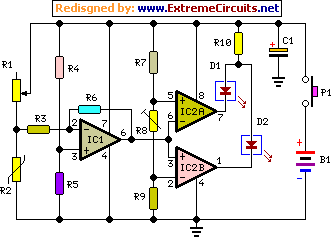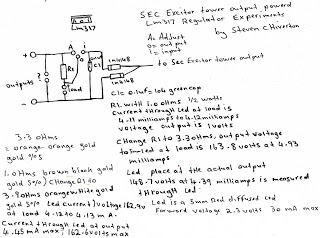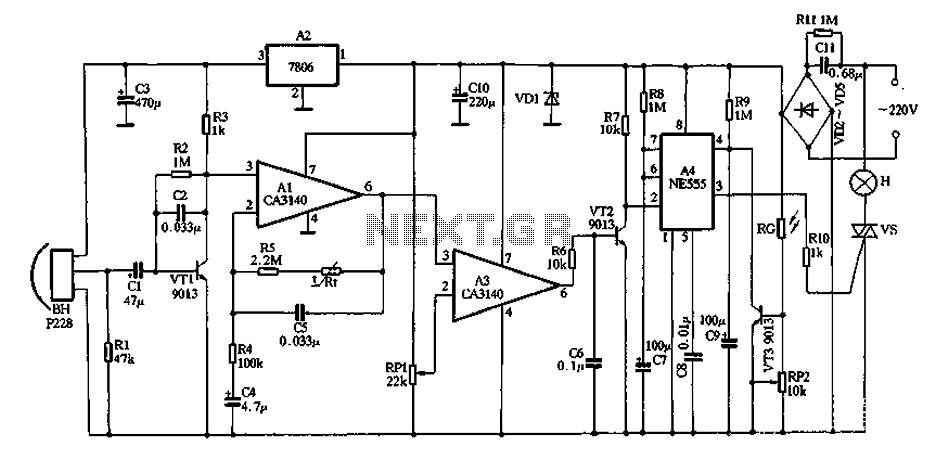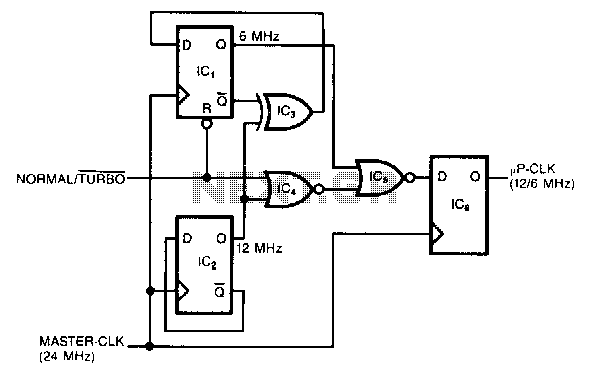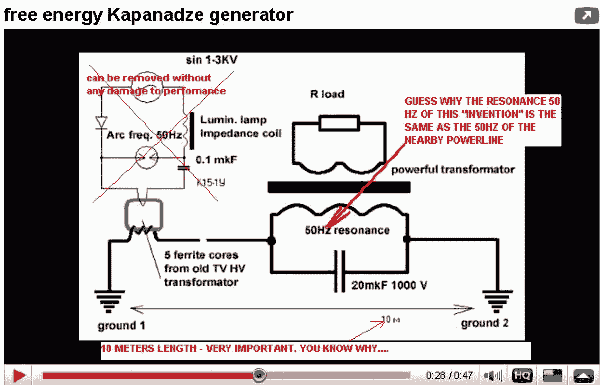
Selfrunning Free Energy 5 KW Kapanadze 3
Warning: Undefined array key "extension" in /var/www/html/nextgr/view-circuit.php on line 468
Deprecated: strtolower(): Passing null to parameter #1 ($string) of type string is deprecated in /var/www/html/nextgr/view-circuit.php on line 468
The Kapanadze device operates on the same principle as the oscillator-shuttle circuit discovered by Tesla over a century ago, and similarly aligns with concepts described by Bearden three decades ago regarding electrical free energy. This prior art may render the Kapanadze device patent invalid. The inventor, Kapanadze, may be aware of this and thus hesitant to disclose the schematics of his device, as doing so would not yield financial gain. However, releasing the schematics could increase his notoriety, contrasting with the risk of being overshadowed by others in the field. The device's design includes a generator schematic, which features an ECFI bobbin that is strongly heated and incorporates a diode. The interaction between grounding and the iron casing generates electromotive force, causing current to flow from the ground towards the casing. The metal casing is noted for its unusual properties, as suggested by Tesla. Understanding electromagnetic induction is crucial; it is produced by changes in the magnetic field rather than a direct magnetic force. The flow of energy producing charge forms the basis of magnetism, and permanent magnets result from "freezing" charged matter. Voltage can be induced without movement, simply by altering charge density, which creates longitudinal wave pairs within the conductor. Understanding the origin of charge leads to profound insights into energy and mass, a concept foundational to Einstein's theories of relativity.
The Kapanadze device embodies principles of energy generation that resonate with historical theories of electromagnetic induction and charge dynamics. The device's operation hinges on the interaction between an energized coil and its surrounding environment, particularly the metal casing, which serves to enhance the electromagnetic effects through resonance and inductive coupling. The ECFI bobbin, integral to the generator, is subjected to significant thermal energy, optimizing its performance and efficiency in energy conversion processes.
The generator schematic outlines a configuration that facilitates the generation of electrical energy through the manipulation of electromagnetic fields. The diode incorporated within the circuit serves a dual purpose: it rectifies the output, ensuring a unidirectional flow of current, and protects the circuit from potential back EMF that could disrupt the operation of the generator.
The grounding mechanism is pivotal in establishing a potential difference that drives current through the circuit. The iron casing's unique properties, as alluded to in Tesla's work, may allow for enhanced energy capture and conversion. This casing acts as a conduit for the electromagnetic field, which is essential for sustaining the oscillatory behavior of the circuit.
The theoretical foundation of the Kapanadze device is rooted in the understanding that electromagnetic induction arises not merely from motion but from the dynamic interplay of electric fields and charged particles. This insight challenges conventional notions of magnetism, proposing that it is an emergent property of energy flow rather than a fundamental force. The implications of this understanding extend to the broader context of energy generation, suggesting that innovative approaches to harnessing electromagnetic phenomena could yield significant advancements in the field of renewable energy technologies.
Overall, the Kapanadze device represents a confluence of historical insights and contemporary engineering, illustrating the potential for rediscovering and reapplying established principles to develop novel energy solutions.If the principle of work of the Kapanadze device is the same principle as discovered by Tesla over a hundreds years ago (oscillator-shuttle-circuit) and it is the same principle as described by Bearden thirty years ago (The Secret of Electrical Free Energy) then the patent of the Kapanadze device is almost surely invalid due to prior art. If so, Kapanadze knows this and this may be the reason he is reluctant to release the appropriate schematics of his device, because he would gain nothing in doing so (at least in terms of money). On the other hand, releasing the schematics would make TK certainly a little bit more famous than waiting for someone else to do so (and thereby turning TK into a bogeyman instead of having tied his name with the name of Tesla forever).
G G‘ G µG G ° G G‘‚¬G G ½G‘ G G G G °G »G‘ ’G ½G °G‘ G ³G µG ½G µG‘‚¬G °G‘G G‘‚¬G ° G ±G °G ½G G ° = Schematic diagram of the generator of the bank GG‘ G G G ±G G ±G G ½G ° G‘ G G »G‘ ’G ½G G ³G‘‚¬G µG µG‘G‘ G‘ - G G G‘ G‘G °G ²G G‘G‘ ’ G G G G = ECFI bobbin strongly heated - to put a diode G‘‚¬G µG ·G G ½G °G‘G G‘‚¬ G G µG G ½G °G‘ 40 G‘ G G ½G ° 5 G‘ G G ½G °G G G‘G °G ½G ° G G G G G °G‘G‘ ’G‘ †G G °G G G ² G‘ G µG ½G‘G‘‚¬G µ G G °G‘‚¬G G °G‘ G ° = G G‘ G µG G ° G G‘‚¬G G ½G‘ G G G G °G »G‘ ’G ½G °G‘ G ³G µG ½G µG‘‚¬G °G‘G G‘‚¬G ° G ±G °G ½G G ° = Schematic diagram of the generator of the bank GG‘ G G G ±G G ±G G ½G ° G‘ G G »G‘ ’G ½G G ³G‘‚¬G µG µG‘G‘ G‘ - G G G‘ G‘G °G ²G G‘G‘ ’ G G G G = ECFI bobbin strongly heated - to put a diode G‘‚¬G µG ·G G ½G °G‘G G‘‚¬ G G µG G ½G °G‘ 40 G‘ G G ½G ° 5 G‘ G G ½G °G G G‘G °G ½G ° G G G G G °G‘G‘ ’G‘ †G G °G G G ² G‘ G µG ½G‘G‘‚¬G µ G G °G‘‚¬G G °G‘ G ° = 5. Between the grounding and the iron casing occurs the electromotive force. An electric current will flow from the ground in the direction of the iron casing. But there is one important point, it is the metal case Tesla has hinted about the fact that there is an unusual ability of the metal casing.
I think that I understood, how to use it. G G G £G ”G G G G G G G G G GG G £GG G G ¤G GG £G G « G G G G G`G G G G G G G G G. You really have to understand that electro-magnetic induction is when the magnetic field EFFECTS arise.
There is no magnetic force. The magnetic field we see when a charged piece of mass is moved is distortion of the electric field pure and simple. If you understand where charge comes from you will understand that magnetism is the flow of energy producing charge.
A permanent magnet is made by "freezing" charged matter into a crystal form. This is why you have to move a free scource of charged matter through an electrostatic field to induce voltage at the ends of the wire. The same inducement is created by not moving anything. Leave the wire motionless and charge a wire perpendicular to the first. Charge density changes will arise at the ends of the wire. It will be of the same polarity and unreadable on a voltmeter. It is a longitudinal wave pair through the copper electron cloud inside the conductor. The way to get any power out of this is to slow the wave down traveling in one direction. Magnetism does not exist it is an effect. If you rediscover the origin of charge you will be pretty march in charge of alot of knowlege. This simple consideration is what allowed Albert Einstein to develop the theory of special relativity.
This theory then was expanded to general relativity and the bold statement that energy equals mass and that you can C 🔗 External reference
The Kapanadze device embodies principles of energy generation that resonate with historical theories of electromagnetic induction and charge dynamics. The device's operation hinges on the interaction between an energized coil and its surrounding environment, particularly the metal casing, which serves to enhance the electromagnetic effects through resonance and inductive coupling. The ECFI bobbin, integral to the generator, is subjected to significant thermal energy, optimizing its performance and efficiency in energy conversion processes.
The generator schematic outlines a configuration that facilitates the generation of electrical energy through the manipulation of electromagnetic fields. The diode incorporated within the circuit serves a dual purpose: it rectifies the output, ensuring a unidirectional flow of current, and protects the circuit from potential back EMF that could disrupt the operation of the generator.
The grounding mechanism is pivotal in establishing a potential difference that drives current through the circuit. The iron casing's unique properties, as alluded to in Tesla's work, may allow for enhanced energy capture and conversion. This casing acts as a conduit for the electromagnetic field, which is essential for sustaining the oscillatory behavior of the circuit.
The theoretical foundation of the Kapanadze device is rooted in the understanding that electromagnetic induction arises not merely from motion but from the dynamic interplay of electric fields and charged particles. This insight challenges conventional notions of magnetism, proposing that it is an emergent property of energy flow rather than a fundamental force. The implications of this understanding extend to the broader context of energy generation, suggesting that innovative approaches to harnessing electromagnetic phenomena could yield significant advancements in the field of renewable energy technologies.
Overall, the Kapanadze device represents a confluence of historical insights and contemporary engineering, illustrating the potential for rediscovering and reapplying established principles to develop novel energy solutions.If the principle of work of the Kapanadze device is the same principle as discovered by Tesla over a hundreds years ago (oscillator-shuttle-circuit) and it is the same principle as described by Bearden thirty years ago (The Secret of Electrical Free Energy) then the patent of the Kapanadze device is almost surely invalid due to prior art. If so, Kapanadze knows this and this may be the reason he is reluctant to release the appropriate schematics of his device, because he would gain nothing in doing so (at least in terms of money). On the other hand, releasing the schematics would make TK certainly a little bit more famous than waiting for someone else to do so (and thereby turning TK into a bogeyman instead of having tied his name with the name of Tesla forever).
G G‘ G µG G ° G G‘‚¬G G ½G‘ G G G G °G »G‘ ’G ½G °G‘ G ³G µG ½G µG‘‚¬G °G‘G G‘‚¬G ° G ±G °G ½G G ° = Schematic diagram of the generator of the bank GG‘ G G G ±G G ±G G ½G ° G‘ G G »G‘ ’G ½G G ³G‘‚¬G µG µG‘G‘ G‘ - G G G‘ G‘G °G ²G G‘G‘ ’ G G G G = ECFI bobbin strongly heated - to put a diode G‘‚¬G µG ·G G ½G °G‘G G‘‚¬ G G µG G ½G °G‘ 40 G‘ G G ½G ° 5 G‘ G G ½G °G G G‘G °G ½G ° G G G G G °G‘G‘ ’G‘ †G G °G G G ² G‘ G µG ½G‘G‘‚¬G µ G G °G‘‚¬G G °G‘ G ° = G G‘ G µG G ° G G‘‚¬G G ½G‘ G G G G °G »G‘ ’G ½G °G‘ G ³G µG ½G µG‘‚¬G °G‘G G‘‚¬G ° G ±G °G ½G G ° = Schematic diagram of the generator of the bank GG‘ G G G ±G G ±G G ½G ° G‘ G G »G‘ ’G ½G G ³G‘‚¬G µG µG‘G‘ G‘ - G G G‘ G‘G °G ²G G‘G‘ ’ G G G G = ECFI bobbin strongly heated - to put a diode G‘‚¬G µG ·G G ½G °G‘G G‘‚¬ G G µG G ½G °G‘ 40 G‘ G G ½G ° 5 G‘ G G ½G °G G G‘G °G ½G ° G G G G G °G‘G‘ ’G‘ †G G °G G G ² G‘ G µG ½G‘G‘‚¬G µ G G °G‘‚¬G G °G‘ G ° = 5. Between the grounding and the iron casing occurs the electromotive force. An electric current will flow from the ground in the direction of the iron casing. But there is one important point, it is the metal case Tesla has hinted about the fact that there is an unusual ability of the metal casing.
I think that I understood, how to use it. G G G £G ”G G G G G G G G G GG G £GG G G ¤G GG £G G « G G G G G`G G G G G G G G G. You really have to understand that electro-magnetic induction is when the magnetic field EFFECTS arise.
There is no magnetic force. The magnetic field we see when a charged piece of mass is moved is distortion of the electric field pure and simple. If you understand where charge comes from you will understand that magnetism is the flow of energy producing charge.
A permanent magnet is made by "freezing" charged matter into a crystal form. This is why you have to move a free scource of charged matter through an electrostatic field to induce voltage at the ends of the wire. The same inducement is created by not moving anything. Leave the wire motionless and charge a wire perpendicular to the first. Charge density changes will arise at the ends of the wire. It will be of the same polarity and unreadable on a voltmeter. It is a longitudinal wave pair through the copper electron cloud inside the conductor. The way to get any power out of this is to slow the wave down traveling in one direction. Magnetism does not exist it is an effect. If you rediscover the origin of charge you will be pretty march in charge of alot of knowlege. This simple consideration is what allowed Albert Einstein to develop the theory of special relativity.
This theory then was expanded to general relativity and the bold statement that energy equals mass and that you can C 🔗 External reference
